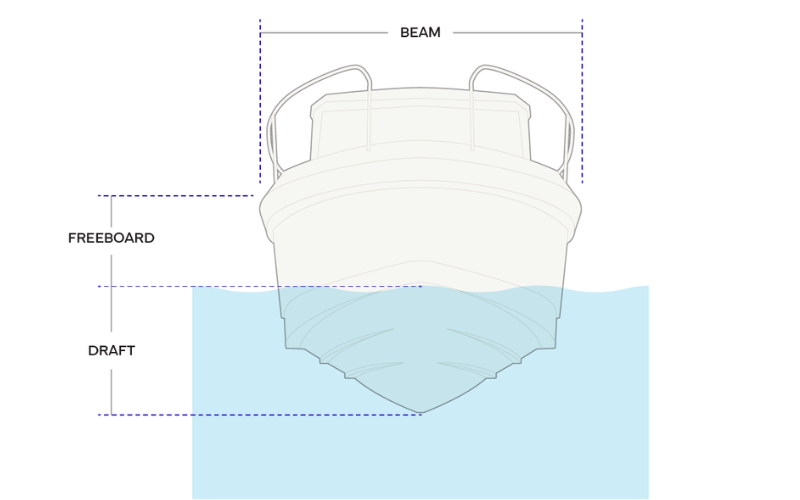Whether you’re a seasoned boater or a newcomer, understanding the different parts of a boat aids safe and enjoyable navigation.
Vessel: A vessel is any watercraft capable of being used for transportation on water.
Port: The left side of a vessel looking forward. Red represents the port side of the vessel.
Starboard: The right side of a vessel looking forward. Green represents the starboard side of the vessel.
Bow: The front part of a vessel.
Stern: The rear end of a vessel.

Hull: The body of the boat that is watertight and keeps the boat afloat.
Deck: The top surface of the boat, where passengers and crew can stand.
Keel: A structure running along the bottom of the hull, providing stability and helping with steering.
Transom: The flat surface forming the stern of the boat.
Gunwale: The gunwale is the top edge of the sides of a boat. Pronounced “gunnel,” even though it looks like “gun-wale.”
Bilge: The bilge of a boat is the lowest inside part where the two sides of the boat come together at the bottom. It’s like a low corner inside the boat. Water or other liquids, like fuel or oil, can collect there. Keeping the bilge clean and dry is important to prevent problems on the boat.
Propeller: Rotating blades that propel the boat forward, usually powered by an engine.
Anchor: A heavy object connected to a chain or line, used to moor the boat to the seabed.
Cleats: Metal fittings on decks used for securing ropes.
Drain Plug: An essential part of a boat that stops water from getting inside. Before putting a motorboat in the water, the operator should make sure the drain plugs are installed before launching and immediately after retrieving the boat.
Emergency Cut-Off Switch (ECOS): The ECOS is a safety mechanism that turns off the boat’s engine if the operator isn’t in the steering area. This helps prevent severe injury or fatalities if the operator is thrown from the helm. The ECOS is often called a “Kill Switch” attached by a safety lanyard.

Beam: Maximum width of the vessel. A wider boat is more stable but moves slower in the water because of more resistance. A narrower boat is less stable but can go faster because it faces less resistance.
Draft: The draft is how deep a boat goes into the water. It’s the space between the water’s surface and the boat’s bottom.
Freeboard: The distance from the water’s surface to the lowest point on the boat where water could get in.
Wake: The V-shaped waves made when a boat moves through the water.
